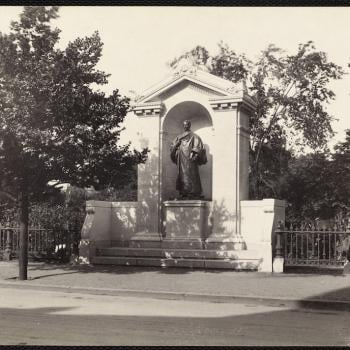 Chief Sealth, better known as Chief Seattle, a leader of the Suquamish and Duwamish nations died on this day in 1866.
Chief Sealth, better known as Chief Seattle, a leader of the Suquamish and Duwamish nations died on this day in 1866.
Wikipedia features an interesting essay outlining the history the famous speech the chief never actually gave. Now, if you’ve never read it, it’s still pretty good even knowing its real history, although the purple seems a bit less forgivable. While all the other links below are part of the original article, I added in a link in the final paragraph to the text for your ease…
There is a controversy about a speech by Sealth concerning the concession of native lands to the settlers.
Even the date and location of the speech has been disputed,[4] but the most common version is that on March 11, 1854, Sealth gave a speech at a large outdoor gathering in Seattle. The meeting had been called by Governor Isaac Ingalls Stevens to discuss the surrender or sale of native land to white settlers. Doc Maynard introduced Stevens, who then briefly explained his mission, which was already well understood by all present.[1]
Sealth then rose to speak. He rested his hand upon the head of the much smaller Stevens, and declaimed with great dignity for an extended period. No one alive today knows what he said; he spoke in the Lushootseed language, and someone translated his words into Chinook Indian trade language, and a third person translated that into English.
Some years later, Dr. Henry A. Smith wrote down an English version of the speech, based on Smith’s notes. It was a flowery text in which Sealth purportedly thanked the white people for their generosity, demanded that any treaty guarantee access to Native burial grounds, and made a contrast between the God of the white people and that of his own. Smith noted that he had recorded “…but a fragment of his [Sealth’s] speech”.
In 1891, Frederick James Grant’s History of Seattle, Washington reprinted Smith’s version. In 1929, Clarence B. Bagley’s History of King County, Washington reprinted Grant’s version with some additions. In 1931, John M. Rich reprinted the Bagley version in Chief Seattle’s Unanswered Challenge. In the 1960s, articles by William Arrowsmith and the growth of environmentalism revived interest in Sealth’s speech. Ted Perry introduced anachronistic material, such as shooting buffalo from trains, into a new version for a movie called “Home”[5], produced for the Southern Baptist Convention‘s Christian Radio and Television Commission.[6] The movie sunk without a trace, but this newest and most fictional version is the most widely known. Albert Furtwangler analyzes the evolution of Sealth’s speech in Answering Chief Seattle (1997).[7]
The speech attributed to Sealth, as re-written by others, has been widely cited as “powerful, bittersweet plea for respect of Native American rights and environmental values”[5], but there is little evidence that he actually spoke it. A similar controversy surrounds a purported 1855 letter from Sealth to President Franklin Pierce, which has never been located and, based on internal evidence, is considered “an unhistorical artifact of someone’s fertile literary imagination”.[4]












